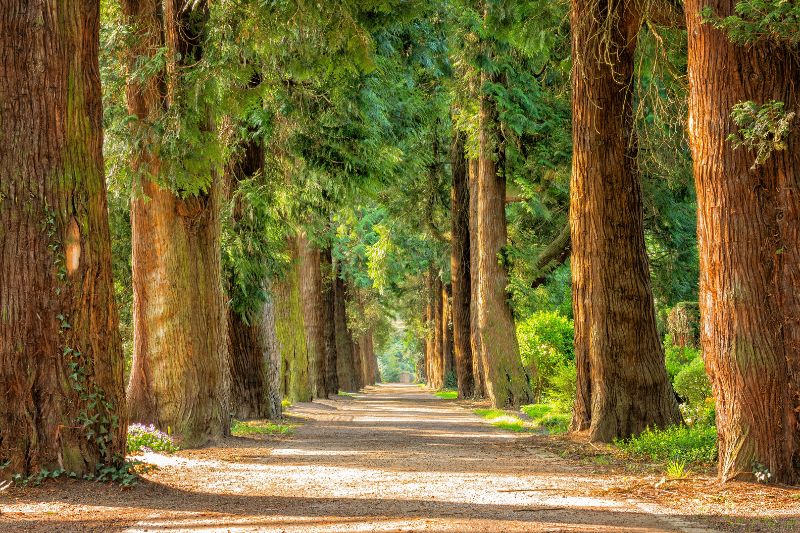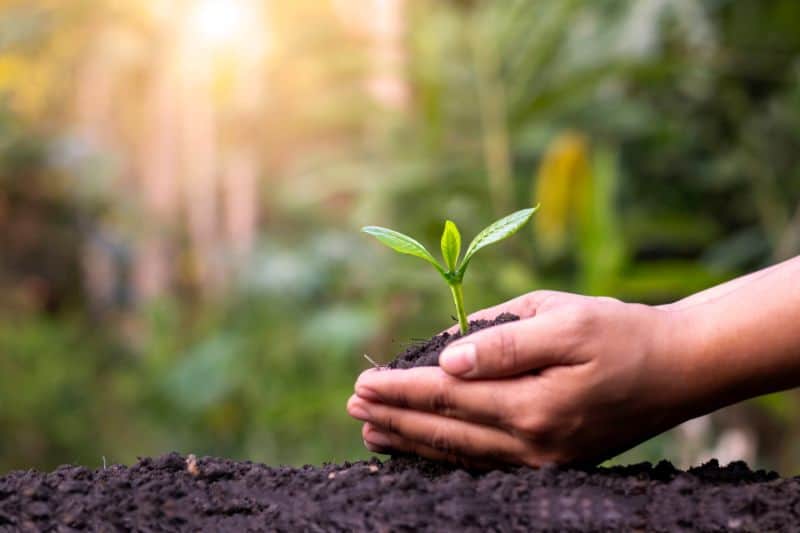Over the last decade, the talk on global warming and climate change has dominated major events and conferences. Politicians and global leaders have campaigned on the idea of helping combat the issue of global warming. As such, afforestation has been one of the most talked-about methods of dealing with global warming.
What is Afforestation?
The key idea about afforestation is that it is done in areas that have previously not been forested. This process involves the introduction of trees or tree seedlings to the area, which leads to the area being developed as a forest. Afforestation can be done through tree planting and seedlings, either naturally or artificially.
Usually, afforestation is done on desert lands, places used for grazing, industrial areas, and disused agricultural fields. These abandoned areas are usually chosen due to poor soil quality, depleted soil, and overgrazing. Afforestation improves and develops these areas, enhancing soil quality and helping the environment.
For an area to qualify as afforestation through tree planting, it must not have previously been forested. Even if the land had been forested over a century ago, as long as there’s no documented history of recent forest cover, the establishment of trees in the region can be classified as afforestation.
Afforestation Vs. Reforestation
Reforestation is a form of afforestation. This process involves the alteration of a non-forested area that has been previously forested through tree planting or seedlings.
The main difference between afforestation and reforestation is the area that they are foresting. Speaking of reforestation, it targets the restoration of a past forest, and afforestation is the development of a new forest.
Afforestation Goals
The main reasons for afforestation and reforestation are conservational, environmental, and industrial-commercial purposes.
To save or conserve the ecosystem, afforestation and reforestation are being done. The processes are not randomly executed but carefully planned through studies to avoid further destruction of nature.
Afforestation majorly aims to provide more habitats for animals and wildlife. This contributes to the conservation of both the tree species and the various animal species that call these newly planted areas home. This approach fosters a harmonious coexistence between diverse ecosystems, safeguarding biodiversity and vitality.

Afforestation is also done to answer the continuously growing problem of carbon emissions. It helps introduce more plants or trees into the ecosystem to help absorb carbon dioxide and reduce its content in the air or the atmosphere.
As trees play a pivotal role in carbon dioxide reduction, they offer a solution, albeit modest, to the challenges of climate change and global warming.
Beyond the trees, the newly established forest soil also contributes significantly by absorbing CO2 from the atmosphere at a rate three times higher than the trees alone. This combined effort amplifies the impact of afforestation in addressing environmental concerns.
The soil used for the afforestation also gets to be healthy again and helps in the natural water filtration system. Moreover, afforestation helps the environment by providing shade for people, wildlife habitat, and food for both humans and herbivores.
Furthermore, industrial-commercial afforestation and reforestation are done to provide wood supply to the market. The trees are not planted for environmental and habitat purposes but are planted for future consumption.
The Process of Creating a Forest
Afforestation is done through careful studies and research on where the forest is being developed.
The factors considered before starting afforestation are: s
- Soil quality
- The environment around it
- The right tree to plant
- The natural environmental system in the area
Aside from these factors, the number and spacing of trees are also another aspect to consider, but that is usually determined by the primary goal of the afforestation.
Moreover, the prevailing winds, the direction of sunlight in different seasons, and many others are also considered before starting the development of a forest in an area.
To put it simply, afforestation refers to the process of sowing seeds or planting trees in an area that does not have trees to create a forest.
According to the Vocabulary, afforestation is “the conversion of bare or cultivated land into forest.”
However, afforestation should not be confused with reforestation. Reforestation refers to planting trees on land with a decreasing number of trees.
The forest is not a resource for us, it is life itself. It is the only place for us to live.”
~Evaristo Nugkuag Ikanan
Therefore, reforestation is the process of increasing trees in an existing forest, while afforestation is the process of creating a new forest. In this article, we aim to examine the importance of afforestation and its advantages.
Importance of Afforestation
Afforestation is a fundamental initiative that every government needs to embrace. Here’s why it’s important:
1. Provides an Alternative Source of Tree Products
In today’s world, the rate at which trees grow naturally in forests is much slower than the rate at which trees in forests are cut down for production. The increased demand for tree products has pressured forests, resulting in deforestation.
Afforestation is helping alleviate the pressure on natural forests by providing an alternative source of tree products. It is mainly done for commercial purposes.
2. Increases Supply of Trees that Are in High Demand

In the commercial world, demand is usually high for a specific type of tree. Afforestation allows stakeholders to plant the types of trees in demand, promoting the fast propagation of specific types of trees.
Introducing a new supply of trees, for instance, can help stabilize the cottage industry, resulting in stable prices and business reliability.
3. Protects Natural Forests
Protecting natural forests without providing alternative sources of tree products is very difficult and unsustainable. Besides, logging is more common in places without alternative sources of tree products.
However, when commercial tree users have alternative sources of supply, they can support the administrative and policy efforts to protect forests, resulting in more sustainable initiatives.
Protecting natural forests also leads to other benefits that come with increased tree forest cover, like preserving catchments, wetlands, and riverside zones.
4. Has Lots of Environmental benefits
Planting trees on barren land is, on some occasions, more beneficial than planting trees in a depleted or depleting forest. Planting trees in depleted or recovering forests helps restore the area’s ecosystem, but planting trees in barren land helps create a new ecosystem.
Most governments and institutions have used afforestation to help revert the arid and semi-arid areas to productive areas and improve the appearance of barren lands into picturesque areas.
5. Value Addition
An easy way to transform barren land is by planting trees. Land with trees is more attractive and valuable than barren land. Whether seeking to develop or sell property, planting trees is a sure way of increasing the property’s value.
Various Advantages of Afforestation

Apparently, many advantages come with investing efforts in planting trees in initially non-forested zones. Some of these include:
1. A Constant Supply of Forest Products
Planting trees on land that was not previously productive ensures that the supply of essential products does not stop. Relying on natural forests can be highly unreliable. It is also not predictive due to government and environmental policies.
Forest harvesting is highly regulated. It is usually common for governments to put a ban on forest harvesting, which can be detrimental to a business that fully relies on forest supplies. Afforestation provides people and businesses with reliable alternative sources of forest supplies.
For example, a company can easily and reliably project its annual sales and production when it has its own land trees, compared to when it sources its products from natural forests.
Creating new forests also provides the community with fodder, fruit, firewood, and other valuable resources necessary for humans. In addition to making the resources available, afforestation ensures that the resources are sustainable for the future.
2. Prevents Soil Erosion
Soil erosion is a common problem in barren lands. Barren land is not the best place to be on a windy day. These lands experience strong winds that carry large particles of soil, causing soil erosion while negatively affecting air quality. A great example is the dust bowl, which was highly associated with intensive farming and large tracts of barren land.
Barren lands are also subject to flooding when it rains, resulting in the topsoil being transported to rivers and water sources in the area. Afforestation helps address all the issues of barren land, from soil erosion to improving air quality.
You see, trees act as wind barriers, thereby weakening the speed of the wind and reducing its impact and ability to carry big soil particles. Plus, tree roots play a crucial role by holding the soil together tightly, ensuring it stays in place during flooding.
Tree leaves and branches also help reduce raindrops’ impact on the ground, preventing splash erosion. That keeps the soil in place, ensuring farmers have fertile soil to grow crops. Soil that is held tightly is also less prone to landslides, especially in hilly and mountain regions.
3. Stabilizes the Climate
Planting trees is a proven way of transforming arid and semiarid areas. Places with more trees experience more frequent rains, and thus, planting trees is a perfect way to stabilize the climate. Trees also reduce the greenhouse effect, preventing warmer temperatures as they are the world’s only natural air conditioners.
4. Has the Potential of Reversing Global Warming and Climate Change
Global warming is a major concern for global leaders and environmentalists. As such, more and more people are being encouraged to plant trees in their gardens, and afforestation is a recommended way of addressing global warming.
Trees help reverse the greenhouse effect through photosynthesis, which prompts them to act as carbon sinks. In other words, establishing new forests creates new carbon dioxide-holding areas, thereby reducing the carbon dioxide in the environment. The overall outcome is the reduction of the effect of global warming.
5. Better Quality Air

Trees play an important role in purifying the air. People in areas with trees are less likely to suffer from air-related conditions. Trees purify carbon dioxide and offer oxygen through photosynthesis.
In the last few decades, people have been producing more and more carbon dioxide through their activities like driving, burning fossil fuels, and industrial activities, resulting in more carbon dioxide in the air.
Even worse, instead of having more trees to handle the heightened carbon dioxide emissions, their number has decreased owing to human activities like construction.
This has triggered an imbalance, leading to more toxins in the air, not just through increased carbon dioxide levels but also increased dust particles from construction, driving, and others.
But thanks to afforestation, we can restore the air quality necessary to live healthy lives.
6. Improve Watershed
Without clean water, the earth can’t support life. Humans and animals rely on clean water for survival, hence the need to protect the watershed. Although most efforts are focused on restoring the existing watersheds, afforestation plays a major role in creating new watersheds.
People living in arid and semiarid regions are the most affected when it comes to a lack of clean water for consumption and household use.
Places with forests have several water sources as opposed to places without trees, where they mostly rely on floodwater conservation. Afforestation can help improve the watershed of arid and semiarid areas simply because trees play an essential role in attracting rain to the region. Plus, trees ensure the water is better held in the soil, improving the underground water table.
7. Preservation of Wildlife
When forests diminish, wildlife also diminishes. Wild animals suffer the most when humans invade forests and their other habitats.
Today, most places where humans have built cities and estates used to be grazing and dwelling places for wildlife. As human activities continue to expand, the number of wildlife living in unprotected areas has dwindled.
In fact, without drastic measures, most of these animals will become extinct.
Afforestation helps to ensure enough forests for these species to thrive in. Those animals pushed from their natural habitats by human activities can relocate to the new forests. For this reason, afforestation can aid in protecting wild animals.
8. Provision of Employment and Economic Opportunities
The timber industry is a big employer. In the construction industry, timber products are the basic components of every building. However, before timber becomes ready for final use on the construction site, it undergoes detailed processing.
For example, before hardboards can be used to construct drawers, they must be processed from round timber. The process involves different stages that require a unique set of skills, prompting the need to hire different workers.
Furthermore, since afforestation is the process of turning barren lands into forests, the activity per se requires a huge number of laborers to perform different tasks, including soil digging, sowing seeds, watering plants, and harvesting trees. Most people employed in these fields are previously unemployed and usually poor.
Conclusion
In an era where most efforts by administrators and policymakers are devoted to protecting indigenous forests, afforestation is an impressive solution for curbing the overuse and destruction of natural forests.
Afforestation is a more viable solution as it provides raw materials for human use without harming nature. Furthermore, it also extends the benefits of trees and forests to barren lands, resulting in the region’s economic growth.
References:
Afforestation Objectives by FAO






